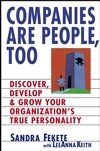- Distributed customers
- Distributed assets
- Distributed knowledge
- Distributed personnel
Then we cannot heed the fact of distribution of problems.
Then I would like to re-define the "Distance" concept used in Scrum teams. The fact that a Scrum team is in the same room, plenty of blackboards and little yellow papers does not mean that necessarily that the team is within a short distance. There are some other variables which must be analyzed as different forms of "separation".There is an excellent article written by John Puopolo in the Scrum Alliance site: "Be there or be Square" that states most of these dimensions. One common conclusion is that it is impossible to be agile if you are separated. I would like to re-analyze this concept by redefining the Distance in Scrum concept:
Distance_in_Scrum = Multi-dimensional variable measured between different forms of separations:
- A = Customer distance
- B = Geographical separations
- C = Business/Technology separations
- D = Separations in Time and Chronobiology separations
- E = Skills separations
- F = Cultural separations
- G = Organizational distances
Distance in Scrum Teams = f(A, B, C, D, E, F, G)
Multivariable Analysis
I would like to decompose the analysis of each variable in further blog's entries. From a systems point of view, each variable here represents a challenge in itself.
Many companies make the mistake of believing in Communication Technology as Distance Remedy, while the Dislocated communication media, can alleviate the problem, E-mail, Chat, Wiki sites, Phone calls, Phone meetings are of course less effective than the communication taking in-person. I have seen people seated at 2 meters of physical distance that do not communicate each other for weeks (working in the same project!)
Chronobiology is also another important topic I want to analyze. Global teams must understand the West-East effect of the Circadian Rhythm when time zones are really different, but also the longer cycle that derive from the North-South effect of being here in summer in Argentina when my colleagues are suffering a cold winter (!). There is no much research on that and I'm sure it impact on the global team performance.
Next entry I am going to analyze the chronobiology impact in Scrum teams distance.



